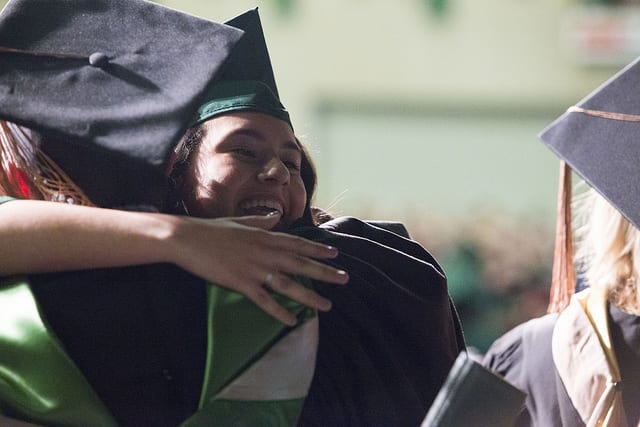My daughter graduated from community college at the same time she graduated from high school last year, thanks to a dual enrollment program in our state. With her associate’s degree in hand, she chose to transfer to a state college nearby so she could live at home and save on room and board. She’s a bright kid who graduated with honors from community college at 17. She undoubtedly could have done well at an elite school if she’d pursued that path—and if it were available to her.
According to a new report, it may not have been. The Jack Cooke Kent foundation released research in January 2019 that indicated community college students are less likely to be admitted to elite schools than high school graduates and other transfers, even though they are actually the most likely to graduate.
The foundation reported that selective institutions (defined as either “Most Competitive” or “Highly Competitive” by Barron’s Profiles of American Colleges) admitted 83% of their students from high schools, 10% as transfers from Four-Year Institutions, and 7% as transfers from community colleges.
But among those three categories, the highest graduation rates came from community college transfers, at 75%, compared with 73% of high school graduates and 61% of four-year transfers.

Community college transfer students
So why the discrepancy? Jennifer Glynn, director of research at the foundation, said, “There is an underrepresentation issue” when it comes to community college transfers at elite schools. Clearly community college students can perform and succeed—when they are let in.
However, as writer Adam Harris pointed out in The Atlantic, prestigious, highly selective colleges don’t enroll very many transfer students. Princeton, for example, didn’t accept any transfers from 1990 to 2018, and this academic year it only offered admission to 13 transfer students out of nearly 1300 total.
Perhaps prestigious schools prefer that students enter their programs fresh from high school as somewhat blank slates. But it’s possible that there’s some educational snobbery at play as well. Low-income students are more likely to attend community college, and there’s an unfortunate and unfair stigma that persists when it comes to the quality of education it provides.
“There are some people who underestimate the rigor of our academics, despite articulation agreements in place that guarantee transfer equivalents,” says Dyan Bledsoe, director of the Pullman campus of Spokane Falls Community College in Washington state.
Living in a college town with a major university, I have seen local students look over the community college option even though it is more affordable, and sometimes a better fit for a student, than the four-year institution. I believe that getting the correct information into the hands of parents and counselors is the key to breaking the stigma.
Bledsoe also points out some of the reasons that community college may help prepare students for success at elite schools. “The first thing that community college develops is a strong academic foundation,” she says. “Because of smaller class sizes, students are able to have more class discussions and more personalized feedback from instructors.
Developing critical thinking skills in the first two years of college makes a student a much stronger candidate at a four-year school. Community Colleges also have a diverse population, so students are exposed to a variety of perspectives in an environment that is supportive and enriching.”
Bledsoe points out that, in addition to class discussions, students often have more direct interaction with teachers because community college professors generally don’t use teaching assistants. “Smaller class sizes foster communication,” she says, “and the practical skills students get when meeting with their professors and participating in class discussions makes them a very strong applicant for a selective institution.”
As a former educator myself, I was quite impressed with the quality of my daughter’s community college classes, as well as the dedication and responsiveness of her teachers. She was happy to learn how college classes and credits work without the pressure that often comes along with going away to college, and she entered university much more prepared than I remember feeling when I went.
Her only complaint was that there were some students in her classes who seemed to not care at all about being there, but even that was a good life lesson about education ultimately being what you put into it.
Having watched my daughter earn her A.A. degree before heading off to university, I have complete faith in students’ ability to thrive at a highly selective institution after learning at a community college. Let’s hope that this report has elite schools looking closer at these students with a more complete understanding of what they bring to the table.
Related:





